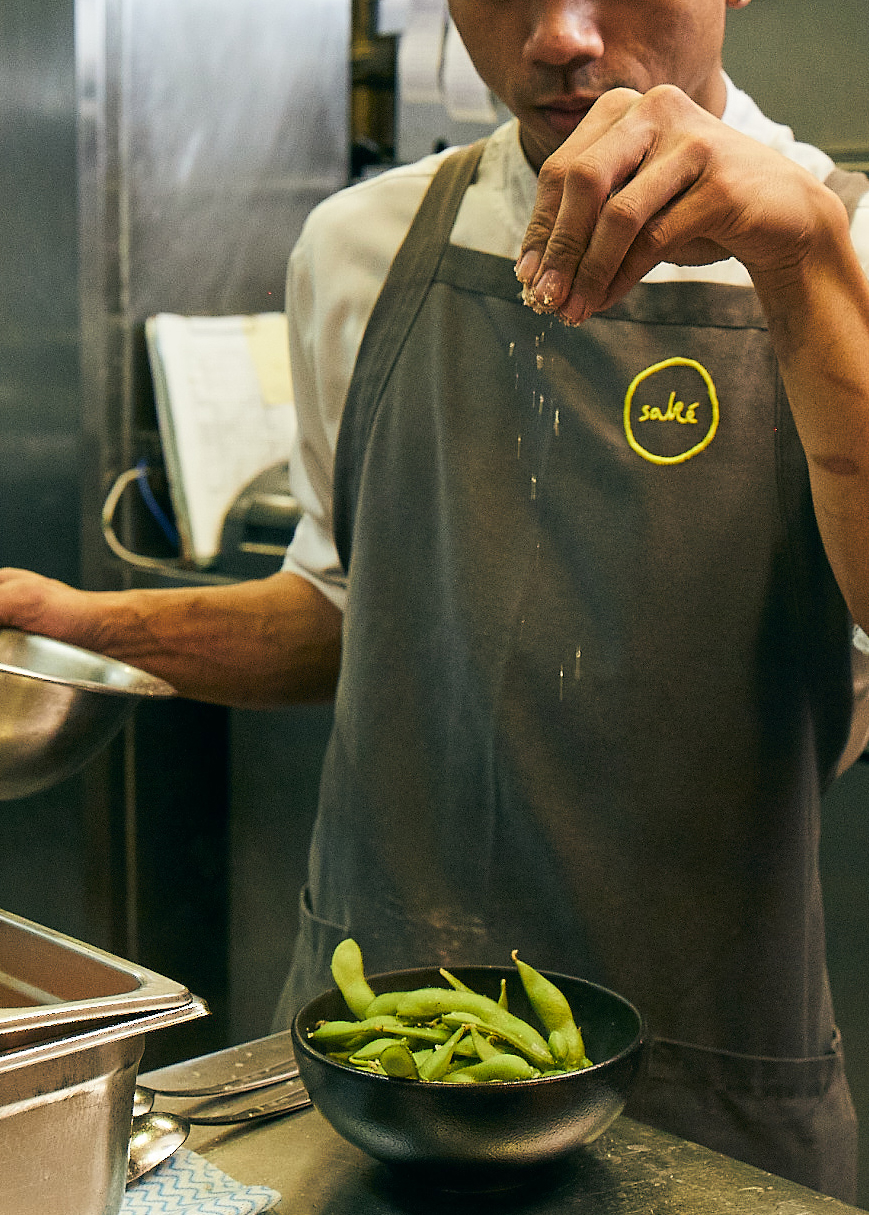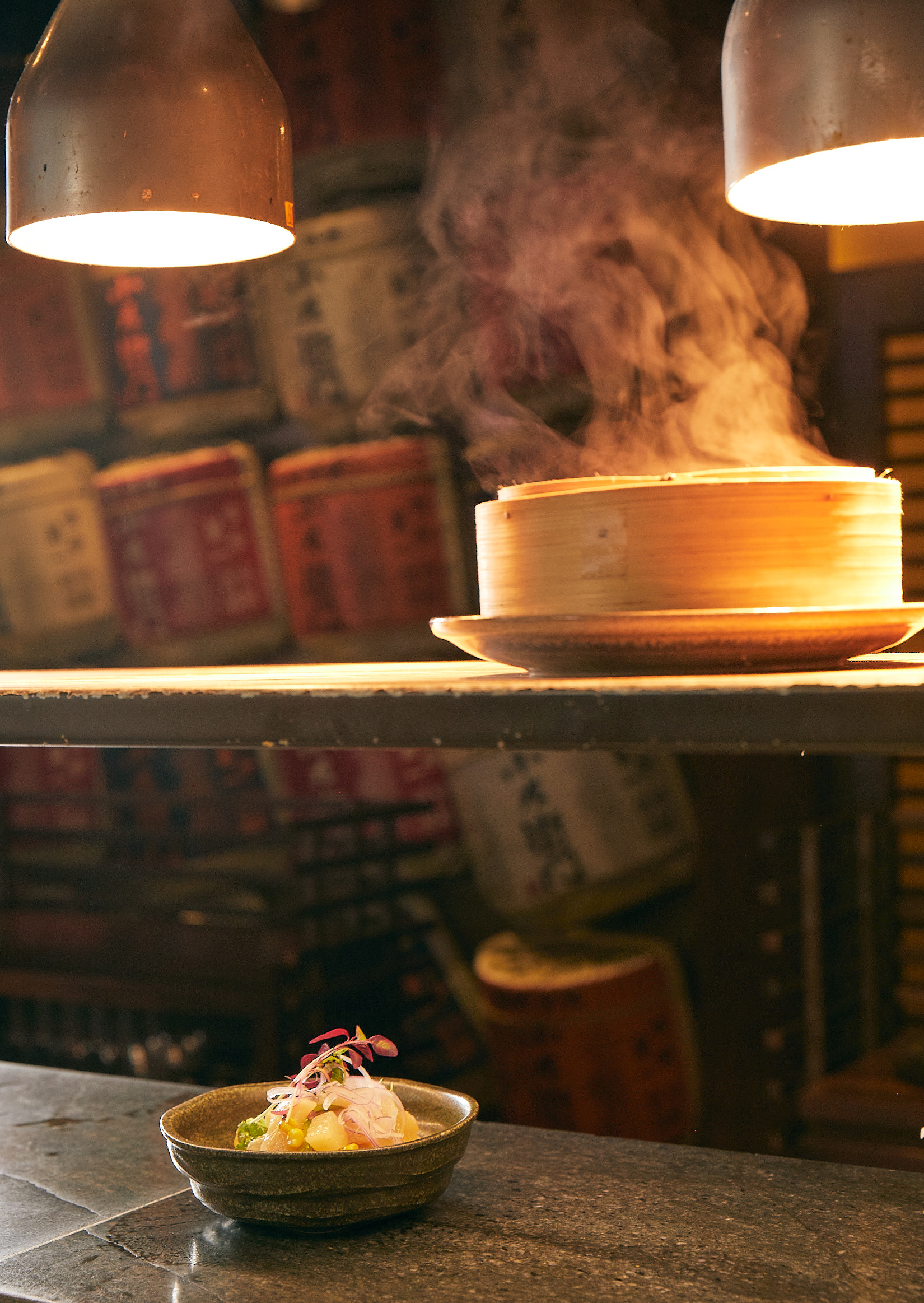News feed
A dab of soy. A smear of wasabi. A delicate piece of pink pickled ginger. Enjoying raw fish, or sashimi, is intrinsic to Japanese culture.
A practise which was at first met with apprehension by parts of the Western world, it is now one of the more savoured, sumptuous delicacies, with sashimi and sushi elemental in Australian dining, too. Its rewards are many; beautifully soft flavour, mouth-watering texture, it is elegant and refined, something which stems back to its fine, artful precision. It’s an art form; its preparation both meticulous and methodical. But there is also an element of theatre, the way a sushi chef cuts the belly of a tuna with drama, or slices pale salmon slowly, or arranges fresh kingfish like sculpture.
The constant in the world of raw Japanese fish is always the same; preserving the fish in the best way possible. Unlike other cultural dishes which treat raw fish with curing and smoking methods, in Japanese cuisine it remains mostly unadorned, its freshness paramount. This stems back to the Japanese fishermen’s common practise of ike jime, a method which paralyses and kills a fish quickly and maintains the quality of its flesh. It’s a process which minimises a build-up of lactic acid in the fish, resulting in sour flavour and mushy texture.
And while it has taken on different forms today, at Saké Restaurant and Bar, it stars – even boasting its own beautiful Raw Fish Counter. A contemporary take on traditional Japanese cuisine, Saké Restaurant and Bar offers up sushi and sashimi with a twist, bringing a unique spin to Japanese classics. With slight Mexican influence, the freshest of fish is prepared in a novel and inventive way. One of its specialties, Hiramasa kingfish with coriander infused sweet ponzu, lime and jalapeño kosho, incorporates ingredients which are not traditional to Japan, lime, coriander and jalapeño all inherent in Mexica n cuisine. It is this imaginative approach which makes Saké a cut – quite literally – above the rest.

Quality is also key. Because of the sheer simplicity of sushi and sashimi, produce, of course, has to be exceptional, something Saké prides itself on. Two of the restaurant’s specialities hero the Hiramasa kingfish, for example, which is sourced by the head chefs across all venues from the Hiramasa kingfish farm in Port Lincoln for its incredible quality. Other fish, such as snapper, is sustainable.
Whether it’s the flavoursome Nori Crisps with Tuna, Kingfish, Green Onion, Togarashi, Sesame Dressing, the indulgent Popcorn Roll or delicate Southern Blue Fin Tuna Tasting, the sublime flavours of Saké’s sashimi and sushi linger…until the next visit.
Here, we speak to Executive Chef Shimpei Hatanaka about what sashimi means to Japanese culture and how Saké is changing the way we eat raw fish.
What is the history / background of the raw fish culture in Japan? How important is raw fish in Japanese cuisine?
Raw fish culture in Japan is fairly new. It all started in the Edo period around 1820’s where Edomae sushi started in Edo (Edo is now know as Tokyo) bay. Collecting seafood that area is where the name “Edomae sushi” came from *mae = in front of. Back in those days, refrigeration was difficult to access as well as a block of ice was very expensive. To prevent bacteria growing and for safe food handling, Most of the sushi was either boiled (octopus, prawn, sea eel) or cured in soy which we call “zuke”. Little by little, refrigerator became accessible and many sushi places we able to serve raw fish. Kyoto where I was working) is more in the mountain area so they had to transport raw fish from Osaka Bay Area. It took days to transport the fish so they used a technique called kobujime: cure with salt and wrap in konbu kelp. This is why you will often find kobujime sashimi in the west part of Japan. Raw fish has always been a favourite for Japanese therefore is very important ingredient in Japanese cuisine. Japanese are known as the best for handling fish to keep the fish at its best condition.
What does the process involve?
It all starts from the fisherman catching the fish, how they ikijime, how they age or keep it fresh to maintain its top quality. One little mistake and it’s all over as there is a big market and competition in Japan. Some restaurants in japan specializes in the freshness of the product (having a live tank), others may be specializing in aged fish raw fish. All being amazing in their way.
IN what ways is it typically consumed?
Raw fish is consumed in many different ways now days. Traditional sashimi “Otsukuri” being the most common, usuzukuri (thinly sliced like carpaccio), sunomono (served with acidity usually vinegar or citrus.), Tataki (seared outside and raw inside). Nowadays there are many raw fish dish around the world like ceviche, poké, kokoda and so on. I find raw fish has become more and more popular here in Australia I’ve the last 25 years. We now have access to many sashimi grade seafood as well as the quality has been improving over the last few years.
There seems a meticulous precision when it comes to sashimi, why is this the case?
The difference between sushi chefs and regular chefs is that they are specialists when it comes to sushi and sashimi. Sushi training involves a high level of dedication and time to perfect the art. In Japan sushi chefs will often go to the fish market in the early mornings when everyone in town is still sleeping to personally pick out the best fish for themselves. The reason for the meticulous precision is practice practice and practice for many years. Practice and effort = success.
What does the Raw Fish Counter at Saké involve?
Each of our sake restaurant venue has an amazing skilled trained sushi chef. Previously done some sushi Omakase events where you get to enjoy a one on one intimate session with the chef and enjoy a similar atmosphere as if you are dining at a sushi restaurant in Japan. The best thing about the being at the counter would be to be able to see all the actions, skills happening as well as talking to the chef for any recommendations. We may have a daily special not listed.
What’s your approach to sushi / sashimi? And how does Saké sushi / sashimi differ from others?
My approach to sushi and sashimi is simply respect. There is no room for for error when it comes to sushi, therefore each slice/ piece needs to be perfect and in order to deliver perfection respect is the key. I often tell my students to slice each piece with “your soul”. The sushi we do at sake is a contemporary version of the old school Edomae style, playing within the boundaries of the fundamentals.
What is the Saké sushi / sashimi speciality?
As we are in Australia not Japan, our products, seafood, consumers differ from Japan. We focus on using local ingredients, design our menu and recipe to a taste our locals would enjoy. We have a mix of both traditional and contemporary style of dishes. For sushi, each venue has there own style of shari (seasoned sushi rice). We use different brand of rice, depending on the crop, the chef needs to adjust the soaking time and water amount when cooking. This takes years and years to perfect. Each state has access to different seafood and local fisheries. Sydney fish market being the largest has many seafood but I have noticed in VIC we have nice king George whiting, southern calamari, gurnard, garfish so on.
Our nigiri is closer to the edomae style sushi using fresh local seafood which is in season. We are now just finishing the blue fin tuna season as we head into spring. Rolls we do more of a contemporary style which is inside out roll like spicy tuna, soft shell crab, salmon avocado, prawn tempura roll and so on.
Sashimi we like to serve on ice. It maintains a nice temperature as well as freshness. We serve from traditional sashimi to contemporary style sashimi. Each of our venue differs in a way but we have dishes like Hisamasa kingfish served with coriander infused ponzu, snapper white soy, tuna ceviche, tuna and kingfish Nori crisps with sesame dressing, salmon tartare, seared scallop with corn purée and mustard vinegar miso.
What are the best pairings to enjoy sushi / sashimi with?
100 percent sake! Rice is the main character in sushi, so naturally sake which is also made with rice with neutral clean flavours works best.

For more information and to make your reservation, visit the website here. See dates below.
CHEF DINNERS
WEST JAPAN
Hamer Hall – Wednesday September 18, 6:30pm
Double Bay – Thursday September 19, 6:30pm
Flinders Lane – Thursday September 26, 6:30pm
Manly – Thursday September 26, 6:30pm
JAPANESE PICNIC
Hamer Hall – Saturday September 21 & Sunday September 22, 12:30pm
Eagle Street Pier – Saturday September 28 & Sunday September 29, 12:30pm









